Common Plug Valve Problems & Solutions for Middle East Clients
19 Sep, 2025
In the Middle East, industries such as oil and gas, petrochemicals, and water treatment thrive under harsh environmental conditions - high temperatures, sandstorms, and corrosive substances - and plug valves play a crucial role in regulating fluid flow. However, these valves often encounter various problems, which may lead to operational interruptions. The following are the five most common problems with plug valves, along with detailed reasons and effective solutions tailored for Middle Eastern customers. We will also focus on addressing key issues such as "Plug Valve Leakage Repair" and "Troubleshooting of stuck plug Valves" to provide practical guidance.
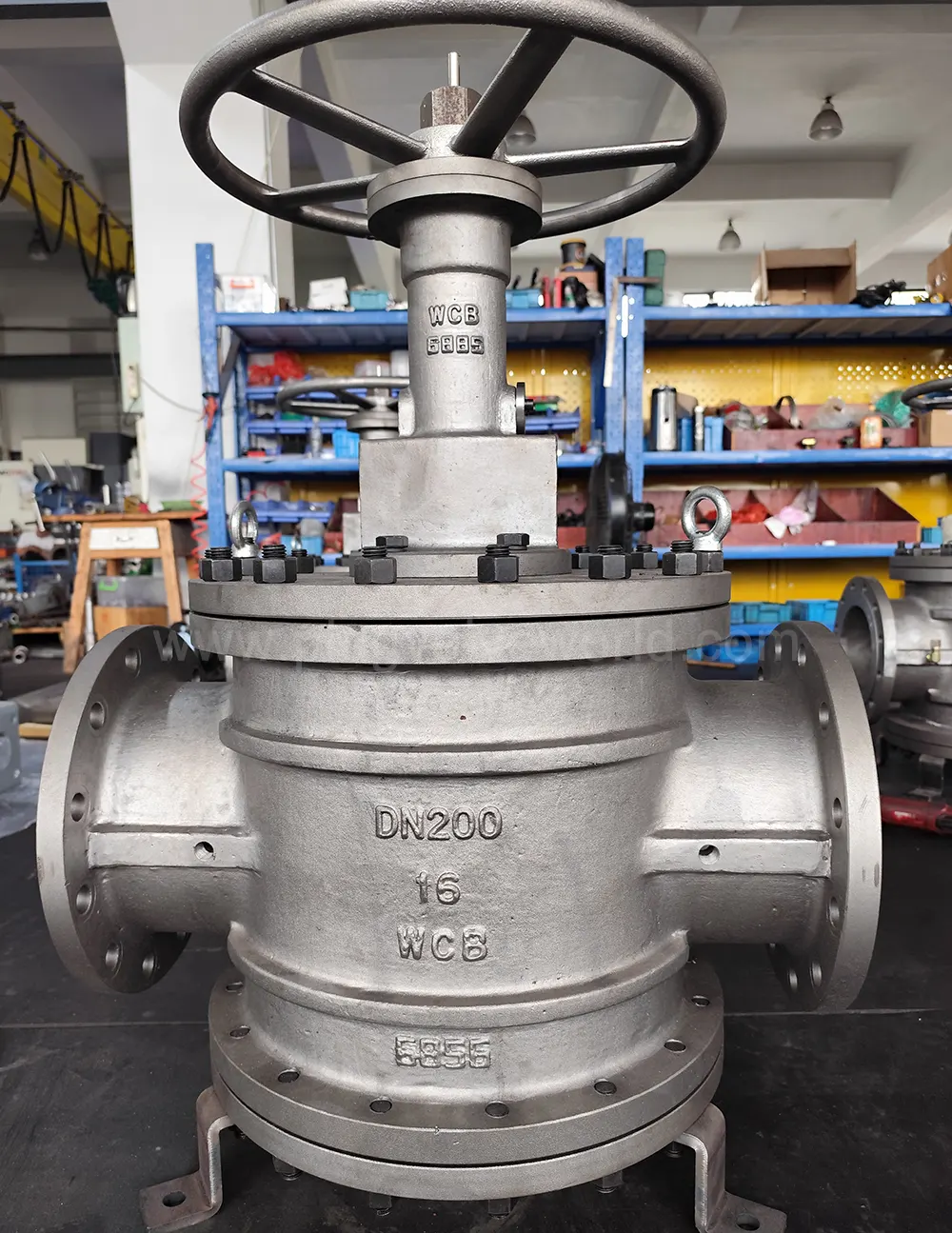
1. Plug Valve Leakage
Leakage is one of the most common problems with plug valves, especially in areas like Dubai where temperatures fluctuate frequently and where they are exposed to corrosive media such as salt water in coastal regions or irritating chemicals from petrochemical plants, which can accelerate wear.
Reason
• Seal damage: The seal between the plug valve and the valve body (usually made of elastomer or metal) will age over time due to high temperatures (common in the Middle East, where daytime temperatures often exceed 40°C) and chemical corrosion. For instance, at a refinery in Dubai, sulfur-containing compounds in crude oil can damage rubber sealing rings, leading to leakage.
• Improper installation: If the plug valve is not installed correctly (for example, the plug valve and the valve body are not aligned correctly or the torque is uneven during assembly), a gap may form, causing fluid leakage.
• Wear of the plug valve or valve body: Continuous use, especially in applications involving abrasive fluids (such as sandy water in desert areas), can cause the plug valve or valve body to be scratched or worn. This will reduce the tight fit between the two components, thereby causing leakage.
Solutions (Including "Plug Valve Leakage Repair Dubai")
• Seal replacement: For minor leaks caused by damaged seals, please replace the worn seals with high-temperature and corrosion-resistant materials suitable for the Middle East climate. In Dubai, timely maintenance is crucial for minimizing downtime. Local service providers offer on-site seal replacement services using durable materials such as PTFE (polytetrafluoroethylene) or Viton, which can withstand high temperatures and chemical corrosion.
• Plug and valve body repair: If the plug or valve body is worn out, repair is an economical and efficient solution. In Dubai, professional repair shops use techniques such as grinding (grinding the surface to form a tight seal) or metal coating (applying corrosion-resistant coatings like chromium) to restore the functionality of components. After the maintenance, a pressure test will be conducted on the valve to ensure there is no leakage.
• Correct installation and maintenance: To prevent leakage in the future, please ensure that the valve is installed by a certified technician in accordance with the manufacturer's instructions. Regular maintenance (such as lubricating the valve plug and checking the seals every 3 to 6 months (more frequent in harsh environments like the coastal areas of Dubai)) can also extend the service life of the valve and reduce the risk of leakage.
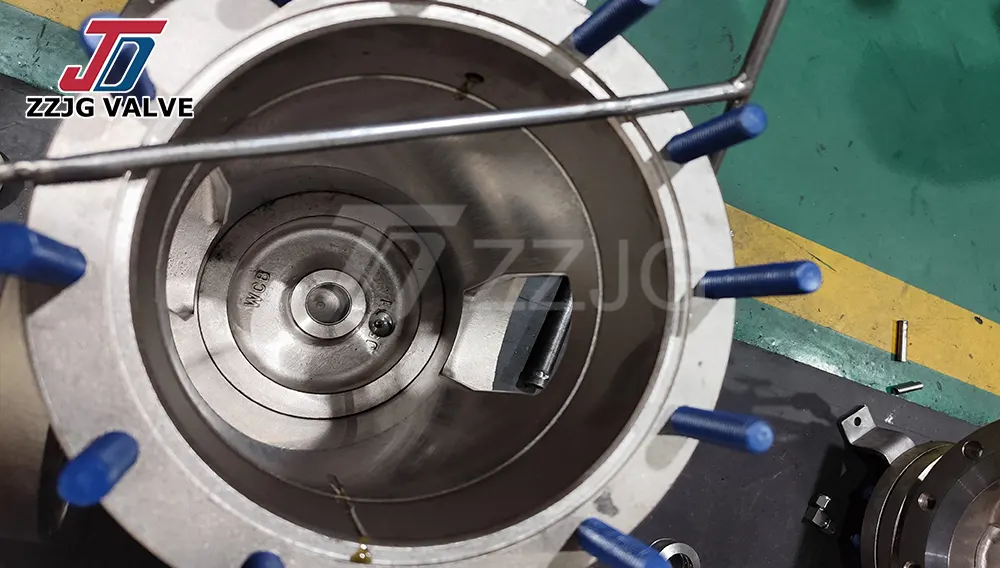
2. Stuck Plug Valve
A stuck plug valve can cause production to come to a halt, causing significant losses to industries in the Middle East that rely on continuous fluid flow. Such problems are particularly common in regions with severe sand and dust weather (such as Saudi Arabia and Qatar) as well as in the construction and water treatment industries in Dubai.
Causes
• Sand and dust accumulation: The climate in the Middle East is dry, and sand and dust weather occurs frequently. Dust particles can easily enter the internal components of the valve. Over time, sand and dust will accumulate between the valve core and the valve body, causing friction and hindering the rotation of the valve core.
• Corrosion: In coastal areas such as Dubai, salt vapor in the air can cause corrosion of valve cores and valve bodies (especially those made of carbon steel). Corrosion can cause rusting and eventually lead to the valve core getting stuck.
• Insufficient lubrication: If the plug valve is insufficiently lubricated, the friction between the plug and the valve body will increase. In high-temperature environments, the lubricant will dry up rapidly, further exacerbating the problem and causing the cock to get stuck.
Solutions (Focusing on "Stuck Plug Valve Troubleshooting")
• Clean interior of the valve: For valves jamming caused by sand or dust accumulation, the first step is to clean the internal components. Technicians use compressed air (with a pressure of 5 to 8 bar) to blow out loose debris from the valve. For stubborn deposits, technicians will use non-corrosive solvents (such as mineral oil essence) to dissolve the dirt, and then rinse the valve with clean water and dry it thoroughly.
• Rust Removal: In case of corrosion-related issue, troubleshooting involves removing accumulated rusts. Technician use a wire brush or sandpaper to gently scrape off rust from the valve core and valve body. For a severe corrosion, they apply chemical rust remover compatible with the valve material, followod by a corrosion-resistant coating to prevent future rusting. In Dubai, seawater corrosion is a major concern. After cleaning, valves are typically coated with epoxy resin or zinc-based paint.
• Lubrication: Proper lubrication is key to preventing and resolving the seizing issue of plug valves. When troubleshooting a seized valve, after cleaning, a high-temperature and corrosion-resistant lubricant (e.g., silicone-based or molybdenum disulfide lubricant) should be applied to the inner surfaces of the plug valve and valve body. Given the high temperatures in the Middle East, select a lubricant with a high flash point (above 200°C) to ensure it does not decompose. Regular lubrication (once every 2 to 3 months in dusty or coastal areas) helps maintain smooth rotation of the plug valve.
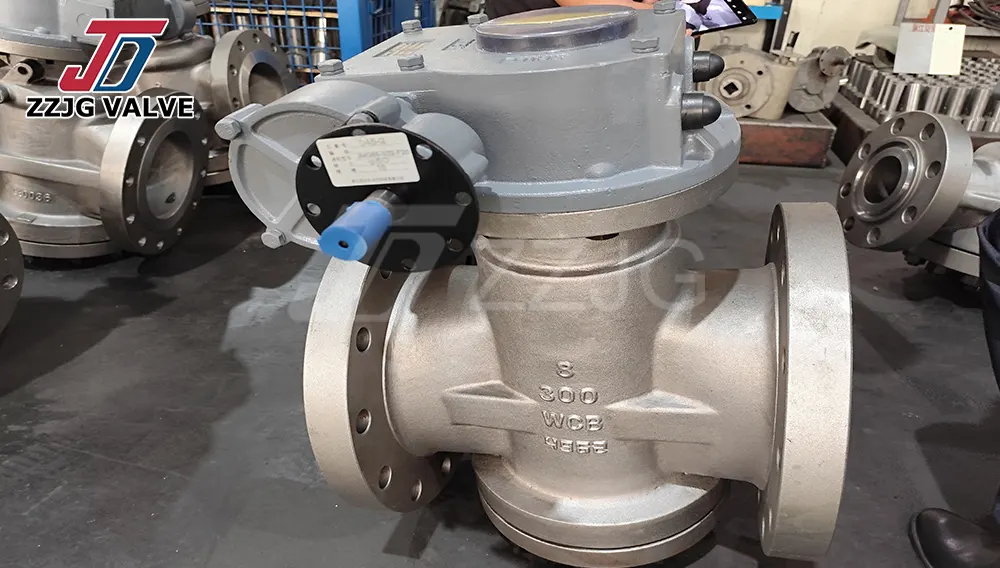
3. Excessive Wear of Plug and Valve Body
Excessive wear of the valve core and valve body reduces the valve's efficiency and service life. This issue has long plagued industries in the Middle East due to the harsh operating conditions in the region.
Causes
• Abrasive fluids: In industries such as mining (common in Jordan and Oman) and construction (thriving in Dubai), plug valves are typically used to handle fluids containing abrasive particles such as sand, gravel or metal shavings. These particles can scratch the surfaces of the plug valve and valve body, leading to their rapid wear.
• High working pressure and temperature: The oil and gas industry in the Middle East operates under high pressure (up to 10,000 psi) and high temperature (over 150°C). These extreme conditions exert additional pressure on the plug valve and valve body, causing them to wear out faster than they would in a mild environment.
• Improper material selection: In corrosive or abrasive environments (such as the Dubai Desalination plant that processes seawater), using inferior materials (such as carbon steel) to manufacture plug valves can lead to premature wear.
Solutions
• Upgrade wear-resistant materials: Replace the plug and valve body with materials that can withstand wear and high-temperature conditions. For example, desalination plants in Dubai recommend using valves made of duplex stainless steel (which offers high corrosion resistance and wear resistance) or ceramics (ideal for highly abrasive fluids). Compared with carbon steel, these materials can extend the service life of valves by 2 to 3 times.
• Install the filter: To prevent abrasive particles from entering the valve, install a filter upstream of the plug valve. In Middle East region with high levels of wind-blown sand and dust, please use high-efficiency filters with a mesh size of 50-100 micron. Clean or replace the filters regularly (once every 1-2 months) ensure their effective operation.
• Adjust working condition: If possible, please adjusting working pressure and temperature to the recommended range of the valve. Such as, in oil and gas pipelines, pressure regulators are used to reduce excessive pressure on plug valves. In high-temperature application, heat shields is installed around valves to lower the temperature of internal components.
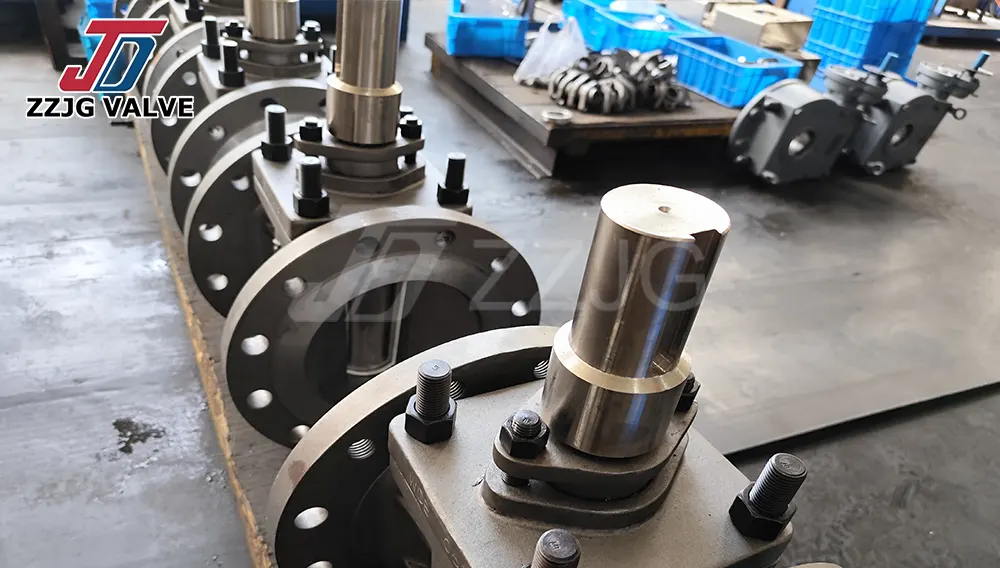
4. Valve Handle or Actuator Failure
The handle or actuator (used to control the rotation of the plug) is a key component of a plug valve. A malfunction in this component will render the valve inoperable, and this issue affects various industries in the Middle East, from manufacturing to water supply.
Causes
• Mechanical stress: In applications where valves are frequently operated (such as water treatment plants in Dubai, where flow is regulated multiple times a day), handles or actuators are subject to repeated mechanical stress. Over time, this can lead to the breakage of the handle or damage to the actuator gears.
• Environmental damage: The harsh environment in the Middle East - high temperatures, sandstorms and humidity - may damage the electrical components (electric actuators) or hydraulic parts (hydraulic actuators) of the actuators. For instance, sand and dust can enter the housing of the actuator and wear down the gears, while high temperatures can cause the motor of the actuator to overheat.
Improper maintenance: Neglecting the inspection and maintenance of handles or actuators can lead to the accumulation of dirt and debris, which can jam moving parts and cause malfunctions.
Solutions
• Replace damaged parts: If the handle is cracked or the actuator gear is worn, please replace the damaged parts with original factory replacement parts. Local suppliers in Dubai have a wide range of handle and actuator components from various common plug valve brands in stock, ensuring quick replacement and minimizing downtime. For electric actuators, please check whether the motor and circuits are damaged. If the motor malfunctions, please replace it with a high-temperature resistant motor suitable for the climate of the Middle East.
• Protect the actuator: Install protective covers around the actuator to prevent sand, dust and moisture. In coastal areas such as Dubai, please use waterproof and anti-corrosion enclosures (made of aluminum or fiberglass) to prevent damage from seawater. For hydraulic actuators, please regularly check the liquid level and replace the hydraulic oil every 6 to 12 months to ensure smooth operation.
• Regular inspection: Check the handle and actuator monthly for any signs of damage, such as cracks, loose components or abnormal noises. In the harsh environmental conditions of the Middle East, the inspection frequency should be increased to once every 2 to 3 weeks. Solve any problem immediately to prevent complete failure.
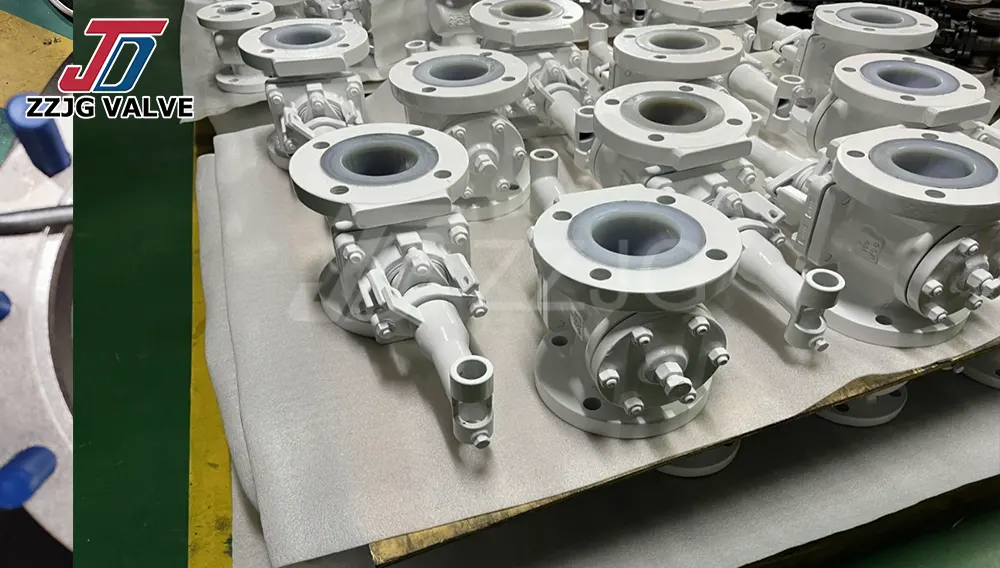
5. Inaccurate Flow Control
Inaccurate flow control of plug valves can lead to low process efficiency, such as uneven chemical dosing in petrochemical plants or inconsistent water supply in residential areas of Dubai.
Causes
• Wear of the valve core or valve seat: As the valve core or valve seat wears out (due to the factors mentioned earlier, such as abrasive fluids or corrosion), the gap between them becomes inconsistent. This will cause the valve to fail to precisely regulate the flow rate - either allowing too much fluid to pass through (overshoot) or overly restricting the flow rate (no overshoot).
• Actuator calibration issue: For automatic plug valves (equipped with electric or hydraulic actuators), incorrect calibration can lead to inaccurate flow control. In the Middle East, temperature fluctuations can affect the performance of actuators, and calibration may drift over time, causing the actuator to move the cock to the wrong position.
• Debris in the valve: Sand, dust or other debris may get stuck between the plug and the valve seat, preventing the plug from closing or opening completely. This will undermine the valve's ability to precisely control the flow rate.
Solutions
• Replace worn parts: If the valve core or valve seat is worn, please replace it with a new part made of high-quality materials. After replacement, the flow control of the valve is tested by measuring the flow at different valve positions (for example, 25%, 50%, 75%, 100% opening degrees) to ensure accuracy. In Dubai, portable flow meters can be used for on-site flow testing. These flow meters can provide real-time data to verify the performance of valves.
• Recalibrate the actuator: For automatic valves, please recalibrate the actuator to ensure that it moves the valve core to the correct position. In the Middle East, temperature changes can affect calibration. Please use actuators with temperature compensation function. During calibration, please follow the manufacturer's guidelines and use the calibrated controller to adjust the actuator Settings. After calibration, please test the valve to confirm that the flow rate matches the required set value.
• Clean the valve: Regularly clean the interior of the valve to remove any debris that may interfere with flow control. As mentioned earlier, please clean the plug, valve seat and other internal components with compressed air and non-corrosive solvents. In the dusty environment of Dubai, it is recommended to clean every 3 to 4 months to prevent the accumulation of debris.
By addressing these five common plug valve issues through the above-mentioned customized solutions, Middle Eastern customers (including those in Dubai, Saudi Arabia and other regional hubs) can ensure the efficient operation of their plug valves, minimize downtime and extend the service life of their equipment. Whether it is "Dubai Plug Valve leakage repair" or "Troubleshooting Stuck plug Valves", proactive maintenance and the use of region-specific solutions are the keys to overcoming the unique challenges of the Middle East operating environment.

1. Plug Valve Leakage
Leakage is one of the most common problems with plug valves, especially in areas like Dubai where temperatures fluctuate frequently and where they are exposed to corrosive media such as salt water in coastal regions or irritating chemicals from petrochemical plants, which can accelerate wear.
Reason
• Seal damage: The seal between the plug valve and the valve body (usually made of elastomer or metal) will age over time due to high temperatures (common in the Middle East, where daytime temperatures often exceed 40°C) and chemical corrosion. For instance, at a refinery in Dubai, sulfur-containing compounds in crude oil can damage rubber sealing rings, leading to leakage.
• Improper installation: If the plug valve is not installed correctly (for example, the plug valve and the valve body are not aligned correctly or the torque is uneven during assembly), a gap may form, causing fluid leakage.
• Wear of the plug valve or valve body: Continuous use, especially in applications involving abrasive fluids (such as sandy water in desert areas), can cause the plug valve or valve body to be scratched or worn. This will reduce the tight fit between the two components, thereby causing leakage.
Solutions (Including "Plug Valve Leakage Repair Dubai")
• Seal replacement: For minor leaks caused by damaged seals, please replace the worn seals with high-temperature and corrosion-resistant materials suitable for the Middle East climate. In Dubai, timely maintenance is crucial for minimizing downtime. Local service providers offer on-site seal replacement services using durable materials such as PTFE (polytetrafluoroethylene) or Viton, which can withstand high temperatures and chemical corrosion.
• Plug and valve body repair: If the plug or valve body is worn out, repair is an economical and efficient solution. In Dubai, professional repair shops use techniques such as grinding (grinding the surface to form a tight seal) or metal coating (applying corrosion-resistant coatings like chromium) to restore the functionality of components. After the maintenance, a pressure test will be conducted on the valve to ensure there is no leakage.
• Correct installation and maintenance: To prevent leakage in the future, please ensure that the valve is installed by a certified technician in accordance with the manufacturer's instructions. Regular maintenance (such as lubricating the valve plug and checking the seals every 3 to 6 months (more frequent in harsh environments like the coastal areas of Dubai)) can also extend the service life of the valve and reduce the risk of leakage.

2. Stuck Plug Valve
A stuck plug valve can cause production to come to a halt, causing significant losses to industries in the Middle East that rely on continuous fluid flow. Such problems are particularly common in regions with severe sand and dust weather (such as Saudi Arabia and Qatar) as well as in the construction and water treatment industries in Dubai.
Causes
• Sand and dust accumulation: The climate in the Middle East is dry, and sand and dust weather occurs frequently. Dust particles can easily enter the internal components of the valve. Over time, sand and dust will accumulate between the valve core and the valve body, causing friction and hindering the rotation of the valve core.
• Corrosion: In coastal areas such as Dubai, salt vapor in the air can cause corrosion of valve cores and valve bodies (especially those made of carbon steel). Corrosion can cause rusting and eventually lead to the valve core getting stuck.
• Insufficient lubrication: If the plug valve is insufficiently lubricated, the friction between the plug and the valve body will increase. In high-temperature environments, the lubricant will dry up rapidly, further exacerbating the problem and causing the cock to get stuck.
Solutions (Focusing on "Stuck Plug Valve Troubleshooting")
• Clean interior of the valve: For valves jamming caused by sand or dust accumulation, the first step is to clean the internal components. Technicians use compressed air (with a pressure of 5 to 8 bar) to blow out loose debris from the valve. For stubborn deposits, technicians will use non-corrosive solvents (such as mineral oil essence) to dissolve the dirt, and then rinse the valve with clean water and dry it thoroughly.
• Rust Removal: In case of corrosion-related issue, troubleshooting involves removing accumulated rusts. Technician use a wire brush or sandpaper to gently scrape off rust from the valve core and valve body. For a severe corrosion, they apply chemical rust remover compatible with the valve material, followod by a corrosion-resistant coating to prevent future rusting. In Dubai, seawater corrosion is a major concern. After cleaning, valves are typically coated with epoxy resin or zinc-based paint.
• Lubrication: Proper lubrication is key to preventing and resolving the seizing issue of plug valves. When troubleshooting a seized valve, after cleaning, a high-temperature and corrosion-resistant lubricant (e.g., silicone-based or molybdenum disulfide lubricant) should be applied to the inner surfaces of the plug valve and valve body. Given the high temperatures in the Middle East, select a lubricant with a high flash point (above 200°C) to ensure it does not decompose. Regular lubrication (once every 2 to 3 months in dusty or coastal areas) helps maintain smooth rotation of the plug valve.

3. Excessive Wear of Plug and Valve Body
Excessive wear of the valve core and valve body reduces the valve's efficiency and service life. This issue has long plagued industries in the Middle East due to the harsh operating conditions in the region.
Causes
• Abrasive fluids: In industries such as mining (common in Jordan and Oman) and construction (thriving in Dubai), plug valves are typically used to handle fluids containing abrasive particles such as sand, gravel or metal shavings. These particles can scratch the surfaces of the plug valve and valve body, leading to their rapid wear.
• High working pressure and temperature: The oil and gas industry in the Middle East operates under high pressure (up to 10,000 psi) and high temperature (over 150°C). These extreme conditions exert additional pressure on the plug valve and valve body, causing them to wear out faster than they would in a mild environment.
• Improper material selection: In corrosive or abrasive environments (such as the Dubai Desalination plant that processes seawater), using inferior materials (such as carbon steel) to manufacture plug valves can lead to premature wear.
Solutions
• Upgrade wear-resistant materials: Replace the plug and valve body with materials that can withstand wear and high-temperature conditions. For example, desalination plants in Dubai recommend using valves made of duplex stainless steel (which offers high corrosion resistance and wear resistance) or ceramics (ideal for highly abrasive fluids). Compared with carbon steel, these materials can extend the service life of valves by 2 to 3 times.
• Install the filter: To prevent abrasive particles from entering the valve, install a filter upstream of the plug valve. In Middle East region with high levels of wind-blown sand and dust, please use high-efficiency filters with a mesh size of 50-100 micron. Clean or replace the filters regularly (once every 1-2 months) ensure their effective operation.
• Adjust working condition: If possible, please adjusting working pressure and temperature to the recommended range of the valve. Such as, in oil and gas pipelines, pressure regulators are used to reduce excessive pressure on plug valves. In high-temperature application, heat shields is installed around valves to lower the temperature of internal components.

4. Valve Handle or Actuator Failure
The handle or actuator (used to control the rotation of the plug) is a key component of a plug valve. A malfunction in this component will render the valve inoperable, and this issue affects various industries in the Middle East, from manufacturing to water supply.
Causes
• Mechanical stress: In applications where valves are frequently operated (such as water treatment plants in Dubai, where flow is regulated multiple times a day), handles or actuators are subject to repeated mechanical stress. Over time, this can lead to the breakage of the handle or damage to the actuator gears.
• Environmental damage: The harsh environment in the Middle East - high temperatures, sandstorms and humidity - may damage the electrical components (electric actuators) or hydraulic parts (hydraulic actuators) of the actuators. For instance, sand and dust can enter the housing of the actuator and wear down the gears, while high temperatures can cause the motor of the actuator to overheat.
Improper maintenance: Neglecting the inspection and maintenance of handles or actuators can lead to the accumulation of dirt and debris, which can jam moving parts and cause malfunctions.
Solutions
• Replace damaged parts: If the handle is cracked or the actuator gear is worn, please replace the damaged parts with original factory replacement parts. Local suppliers in Dubai have a wide range of handle and actuator components from various common plug valve brands in stock, ensuring quick replacement and minimizing downtime. For electric actuators, please check whether the motor and circuits are damaged. If the motor malfunctions, please replace it with a high-temperature resistant motor suitable for the climate of the Middle East.
• Protect the actuator: Install protective covers around the actuator to prevent sand, dust and moisture. In coastal areas such as Dubai, please use waterproof and anti-corrosion enclosures (made of aluminum or fiberglass) to prevent damage from seawater. For hydraulic actuators, please regularly check the liquid level and replace the hydraulic oil every 6 to 12 months to ensure smooth operation.
• Regular inspection: Check the handle and actuator monthly for any signs of damage, such as cracks, loose components or abnormal noises. In the harsh environmental conditions of the Middle East, the inspection frequency should be increased to once every 2 to 3 weeks. Solve any problem immediately to prevent complete failure.

5. Inaccurate Flow Control
Inaccurate flow control of plug valves can lead to low process efficiency, such as uneven chemical dosing in petrochemical plants or inconsistent water supply in residential areas of Dubai.
Causes
• Wear of the valve core or valve seat: As the valve core or valve seat wears out (due to the factors mentioned earlier, such as abrasive fluids or corrosion), the gap between them becomes inconsistent. This will cause the valve to fail to precisely regulate the flow rate - either allowing too much fluid to pass through (overshoot) or overly restricting the flow rate (no overshoot).
• Actuator calibration issue: For automatic plug valves (equipped with electric or hydraulic actuators), incorrect calibration can lead to inaccurate flow control. In the Middle East, temperature fluctuations can affect the performance of actuators, and calibration may drift over time, causing the actuator to move the cock to the wrong position.
• Debris in the valve: Sand, dust or other debris may get stuck between the plug and the valve seat, preventing the plug from closing or opening completely. This will undermine the valve's ability to precisely control the flow rate.
Solutions
• Replace worn parts: If the valve core or valve seat is worn, please replace it with a new part made of high-quality materials. After replacement, the flow control of the valve is tested by measuring the flow at different valve positions (for example, 25%, 50%, 75%, 100% opening degrees) to ensure accuracy. In Dubai, portable flow meters can be used for on-site flow testing. These flow meters can provide real-time data to verify the performance of valves.
• Recalibrate the actuator: For automatic valves, please recalibrate the actuator to ensure that it moves the valve core to the correct position. In the Middle East, temperature changes can affect calibration. Please use actuators with temperature compensation function. During calibration, please follow the manufacturer's guidelines and use the calibrated controller to adjust the actuator Settings. After calibration, please test the valve to confirm that the flow rate matches the required set value.
• Clean the valve: Regularly clean the interior of the valve to remove any debris that may interfere with flow control. As mentioned earlier, please clean the plug, valve seat and other internal components with compressed air and non-corrosive solvents. In the dusty environment of Dubai, it is recommended to clean every 3 to 4 months to prevent the accumulation of debris.
By addressing these five common plug valve issues through the above-mentioned customized solutions, Middle Eastern customers (including those in Dubai, Saudi Arabia and other regional hubs) can ensure the efficient operation of their plug valves, minimize downtime and extend the service life of their equipment. Whether it is "Dubai Plug Valve leakage repair" or "Troubleshooting Stuck plug Valves", proactive maintenance and the use of region-specific solutions are the keys to overcoming the unique challenges of the Middle East operating environment.
Recent News
- TA2 / Gr.2 titanium Plug Valve Manufacturer
- What Is a Three-way Plug Valve
- Philippine Long-term Customers Visit ZZJG Valve Factory
- Ukrainian customer visited ZZJG for inspection
- How To Choose The Appropriate Paint For a Plug Valve?
- Key Factors for Selecting Lined Plug Valve vs. Soft Seated Plug Valve